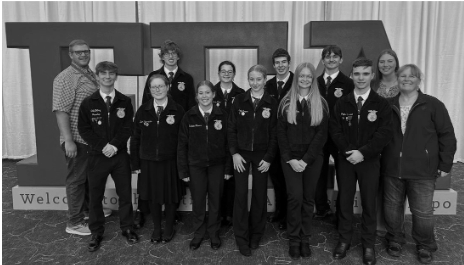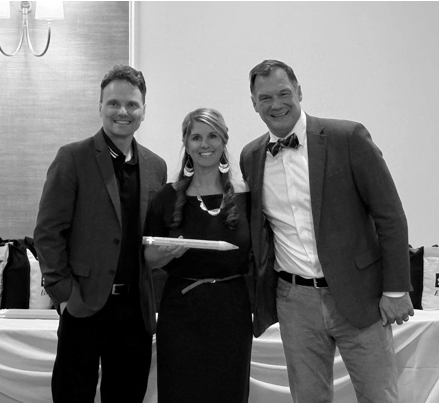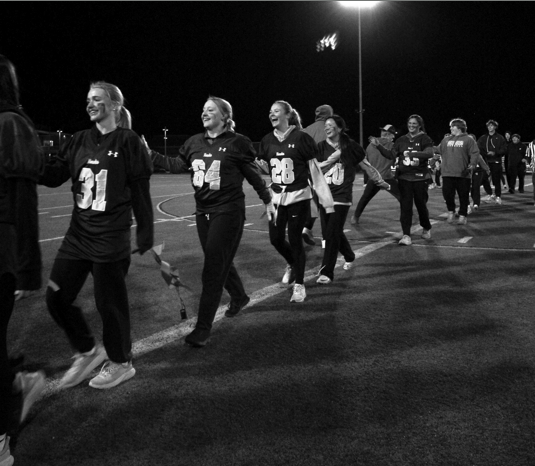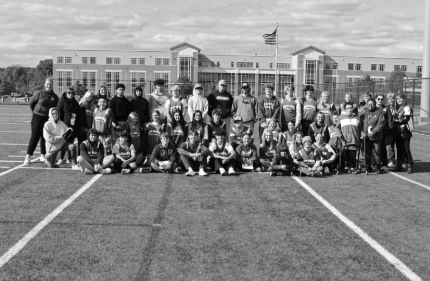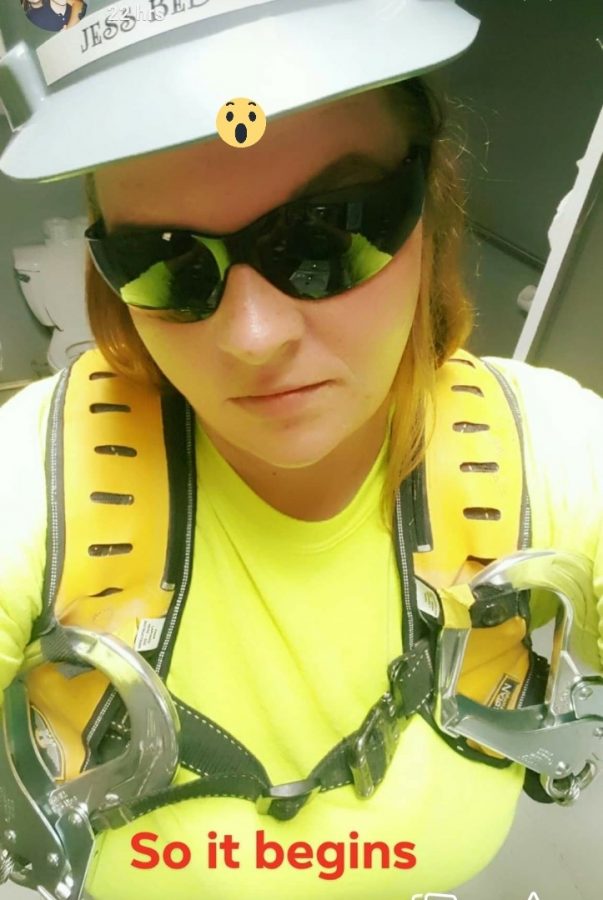NH graduate apprenticeship with power plant; Working for Union in carpentry
Jessica Bedsaul in her harness. She is required to use it by OSHA when on heights above 10 feet.
November 17, 2020
Jessica Bedsaul, a 2007 North Harford graduate, is a second year carpenter apprentice at the Peach Bottom Nuclear Power Plant for Local 431.
Bedsaul explains that she is “on the turbine inside the plant [putting up] scaffold.” As a scaffold carpenter, she is essential to allowing “other workers to be able to reach the area they are working.” Scaffolding is a temporary structure used by workers when attending to a building, according to the dictionary.
“Sometimes, when you first start a job, scaffold[ing] is the only way you can climb,” Bedsaul says. According to Occupational Safety and Health administration (OSHA), scaffolding is generally used when there are “existing [or] predictable hazards in the surroundings or working conditions, which are unsanitary, [or]hazardous to employees.” OSHA also requires employers to “protect each employee on a scaffold more than 10 feet.” For Bedsaul, she wears a harness to protect herself.
“Safety [tells] us every day if we see something wrong, stop and say something,” Besaul explains. “They also told us if we aren’t comfortable with something [to] stop right away.”
She said there are many hazards to her job. “We have to have a two-minute brief when we walk to do our job,” she says. “That brief discusses the dangerous [things] that can happen.” The dangerous parts of her job include “pinch points, slips, trips and falls, and falling hazards. For pinch points you wear proper personal protective equipment (PPE). For slips, trips and falls, [you need to] be aware of [your] surrounding area. For falling hazard[s], be sure you have a harness on,” she elaborates.
Bedsaul works 12 hour shifts 7a.m.-7p.m. with no days off when there is an outage. “We are 138 hours in. Today is day 12 without one off,” she says.
The outage lasted 14 days, “one of the fastest ones ever done,” she explains. “Done is a world record.” When there isn’t an outage, she works 40 hours a week. The reason she works so much more during outages, is because she has “a timeline on things.”
According to Bedsaul, Union workers “fought for breaks and they fought for holidays. Some areas get longer breaks.”
Her apprenticeship is four years. “Every six months you get a raise until you reach $31.85, which is the current rate,” Bedsaul explains. “When you join the Union, you get set up with a pension and annuity.” According to Bedsaul, the pension builds for retirement, while the annuity is “kind of like a stock market.” You can play it safe and keep it low risk, which has built Bedsaul $2,000 in two years, or you can “dump it into high risk, which would triple it,” she says.
Bedsaul has some stories about her job. “They will tell apprentices to go get an air sample, so you will see them with a bag trying to collect air,” she says. “Or they will say ‘oh no this wrench won’t work go get me a left handed wrench.’ After about one hour of searching they’ll say there isn’t [a left handed wrench] that exists.”
She describes her experience as “fun and tiring at the same time.” She also explains that “the job can be demanding and very tough. You will put your heart, sweat and tears into it.” She “would like for others to know how great it is to work for the Union.”
